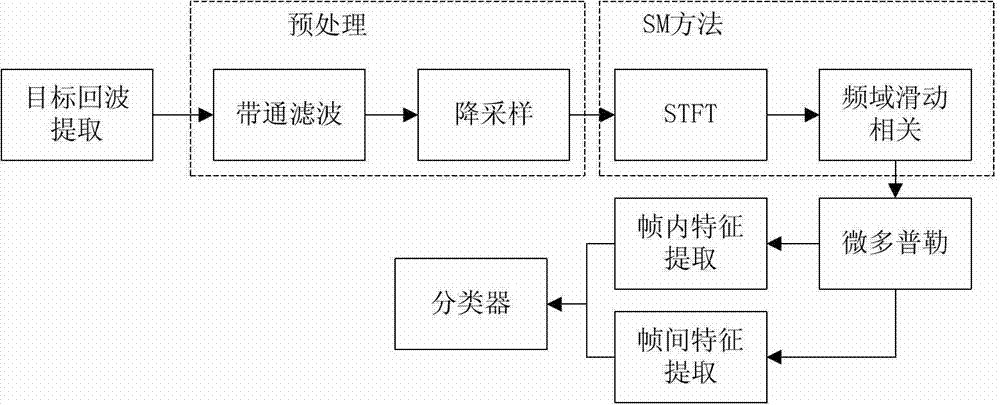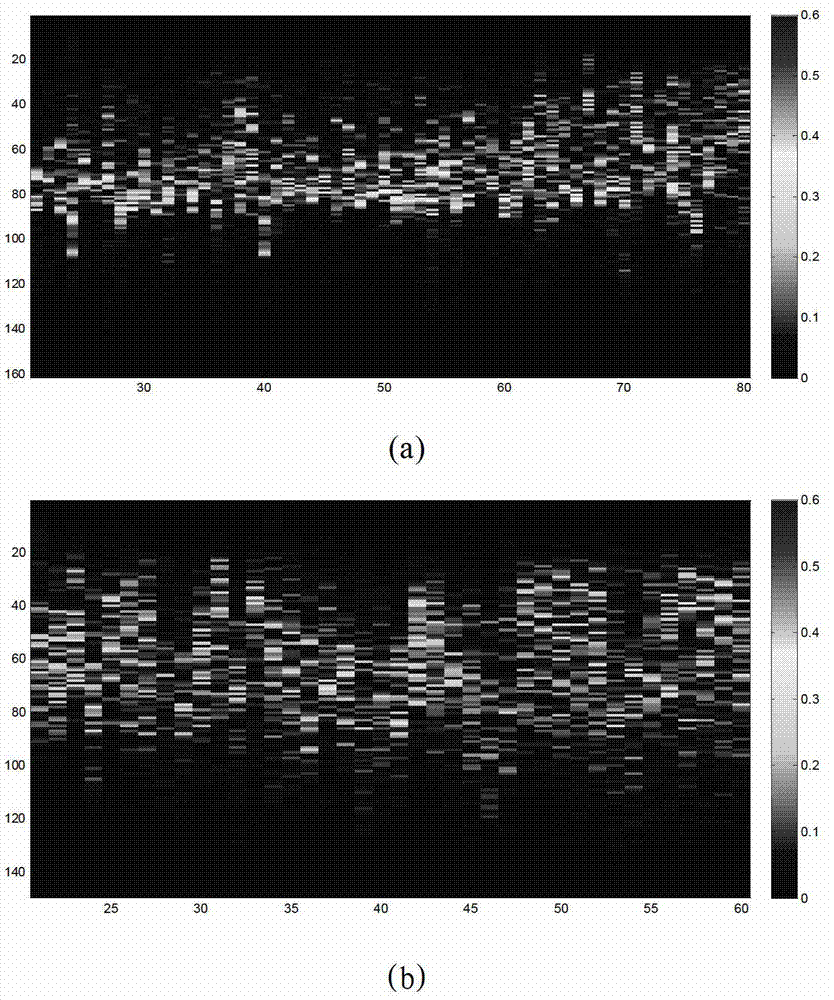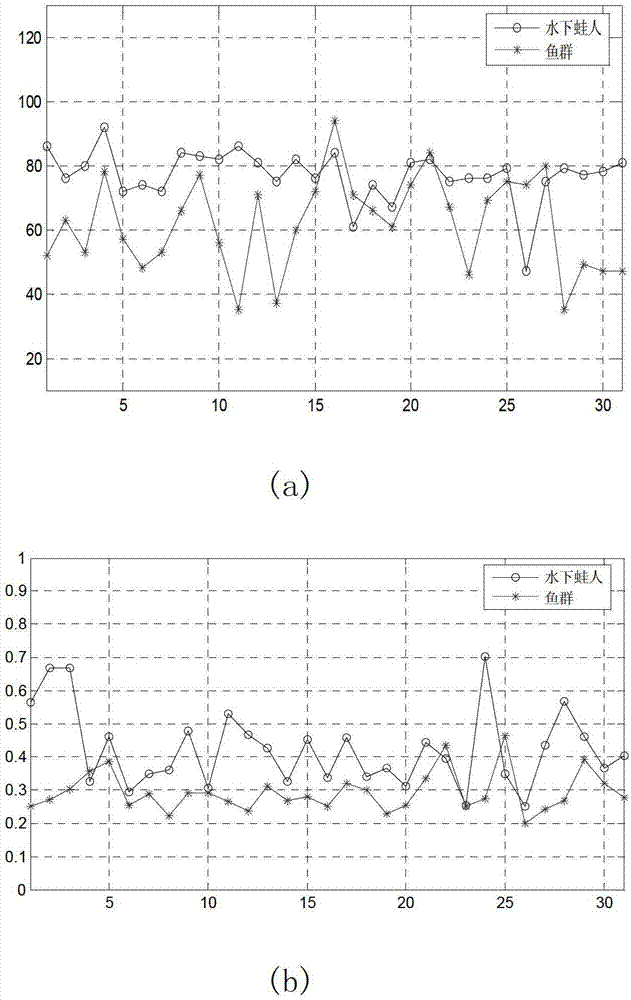Underwater moving target identification method
An underwater moving target and identification method technology, applied in the field of underwater acoustic signal processing, can solve the problems of poor identification stability, no use of inter-frame micro-Doppler characteristics, and inability to obtain the micro-Doppler variation, etc. The effect of reducing the influence and improving the recognition stability
- Summary
- Abstract
- Description
- Claims
- Application Information
AI Technical Summary
Problems solved by technology
Method used
Image
Examples
example
[0057] Example: The active frogman detection sonar uses a linear frequency modulation signal LFM signal with a center frequency of 70kHz, a bandwidth of 8kHz, and a pulse length of 6ms to detect underwater frogman targets and fish targets.
[0058] First, the active frogman sonar receives the echo data of the target for preprocessing, including band-pass filtering, down-sampling, etc., and then uses the SM method to process the underwater frogman and fish separately to obtain the echo data of each frame The SM time-frequency distribution of is shown in Figure (2). Among them, (a) is the micro-Doppler spectrum of the scuba frogman; (b) is the micro-Doppler spectrum of the underwater fish school.
[0059] Again, on the basis of the calculation results of the SM spectrum, the intra-frame micro-Doppler features of the echo data are calculated according to formula (5), image 3 Shows the results of intra-frame micro-Doppler feature analysis for underwater frogmen and fish targets,...
PUM
 Login to View More
Login to View More Abstract
Description
Claims
Application Information
 Login to View More
Login to View More - R&D
- Intellectual Property
- Life Sciences
- Materials
- Tech Scout
- Unparalleled Data Quality
- Higher Quality Content
- 60% Fewer Hallucinations
Browse by: Latest US Patents, China's latest patents, Technical Efficacy Thesaurus, Application Domain, Technology Topic, Popular Technical Reports.
© 2025 PatSnap. All rights reserved.Legal|Privacy policy|Modern Slavery Act Transparency Statement|Sitemap|About US| Contact US: help@patsnap.com



